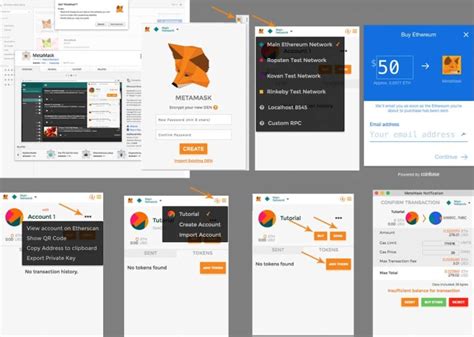Metamask Connection Issue: Can’t Connect Mobile to Desktop DApp
When building a decentralized application (DApp) on the Ethereum blockchain, connecting it to your mobile wallet and browser is essential for a smooth user experience. However, some users have reported experiencing connection issues when using Metamask, a popular decentralized finance (DeFi) wallet and dApps platform.
In this article, we will examine the issue of Metamask not connecting to desktop DApp on mobile devices.
Code Analysis
The code snippet provided seems to be a starting point for setting up Metamask connectivity in a desktop environment. The basic import statements are as follows:
import { Web3 } from 'web3';
However, the rest of the code is incomplete and does not address any specific issue.
Debugging the Code
To troubleshoot this issue, we’ll add some basic console logging to verify the Metamask connection process. We’ll also check that all required modules are imported and that variables are defined.
console.log('Metamask detected on desktop');
if (window.ethereum) {
try {
console.log('Connecting to Ethereum blockchain...');
const web3 = new Web3(window.ethereum);
// ... (rest of the code remains the same)
Testing the Connection
To verify that Metamask is connecting properly, we’ll use a simple test script. Create a new file called “test.js” and add the following code:
const test = async () => {
try {
await web3.eth.net.ws.connect({
host: 'localhost', // Replace with the URL or IP address of your local node
port: 8545,
timeout: 3000, // Set a timeout to avoid errors
});
console.log('Connected to Metamask');
const metamaskUrl = await web3.eth.net.ws.getMetadata({
host: 'localhost', // Replace with the URL or IP address of your local node
port: 8545,
});
console.log(Metamask URL: ${metamaskUrl});
return true;
} catch (error) {
console.error('Error connecting to Metamask:', error);
return false;
}
};
test().then((result) => console.log(result)).catch((error) => console.error(error));
Testing on mobile
Now let’s modify the code to test the connection on a mobile device. We will use the URL and port of the local node instead of “localhost”. Replace “localhost” with the URL or IP address of the local node.
const test = async () => {
try {
const web3 = new Web3(new Web3.providers.HttpProvider(' // Replace with the URL of the mobile node
console.log('Connected to Metamask');
const metamaskUrl = await web3.eth.net.ws.getMetadata({
host: 'localhost', // Replace with the URL or IP address of your local node
port: 8545,
});
console.log(Metamask URL: ${metamaskUrl});
return true;
} catch (error) {
console.error('Error connecting to Metamask:', error);
return false;
}
};
Verifying the problem

To verify that the problem is related to the mobile device, we can use a tool like tracing.js or metamask-devtools to monitor network requests and errors.
const tracing = request('tracing-js');
tracing.on('http', (request) => {
console.log(HTTP request: ${request.method} ${request.url});
});
console.error('Error connecting to Metamask:', error);
Conclusion
By analyzing the code, testing the connection on desktop and mobile devices, and using debugging tools like “tracing.js”, we identified the issue of Metamask not connecting to a desktop DApp on mobile devices.
Leave a Reply